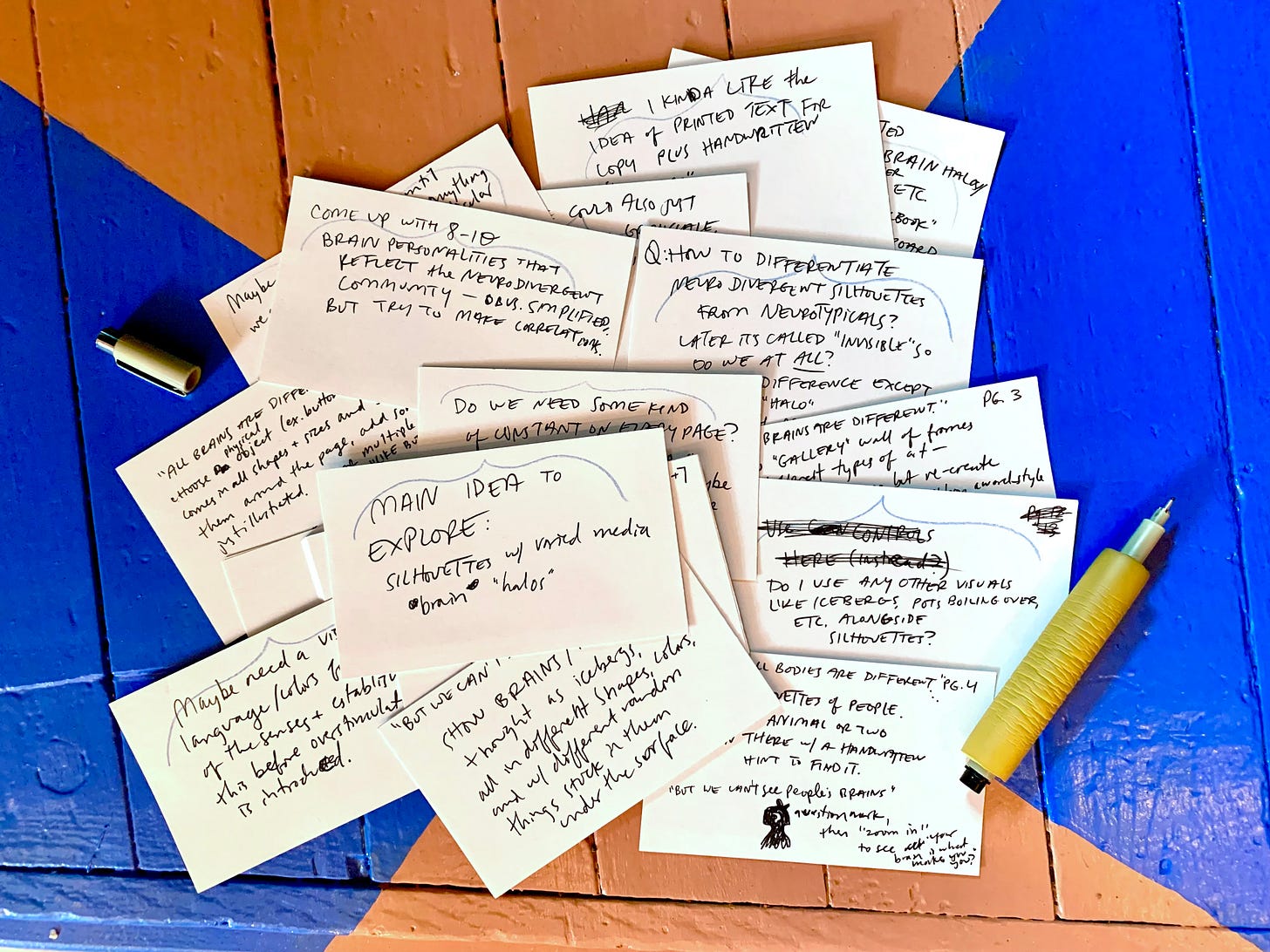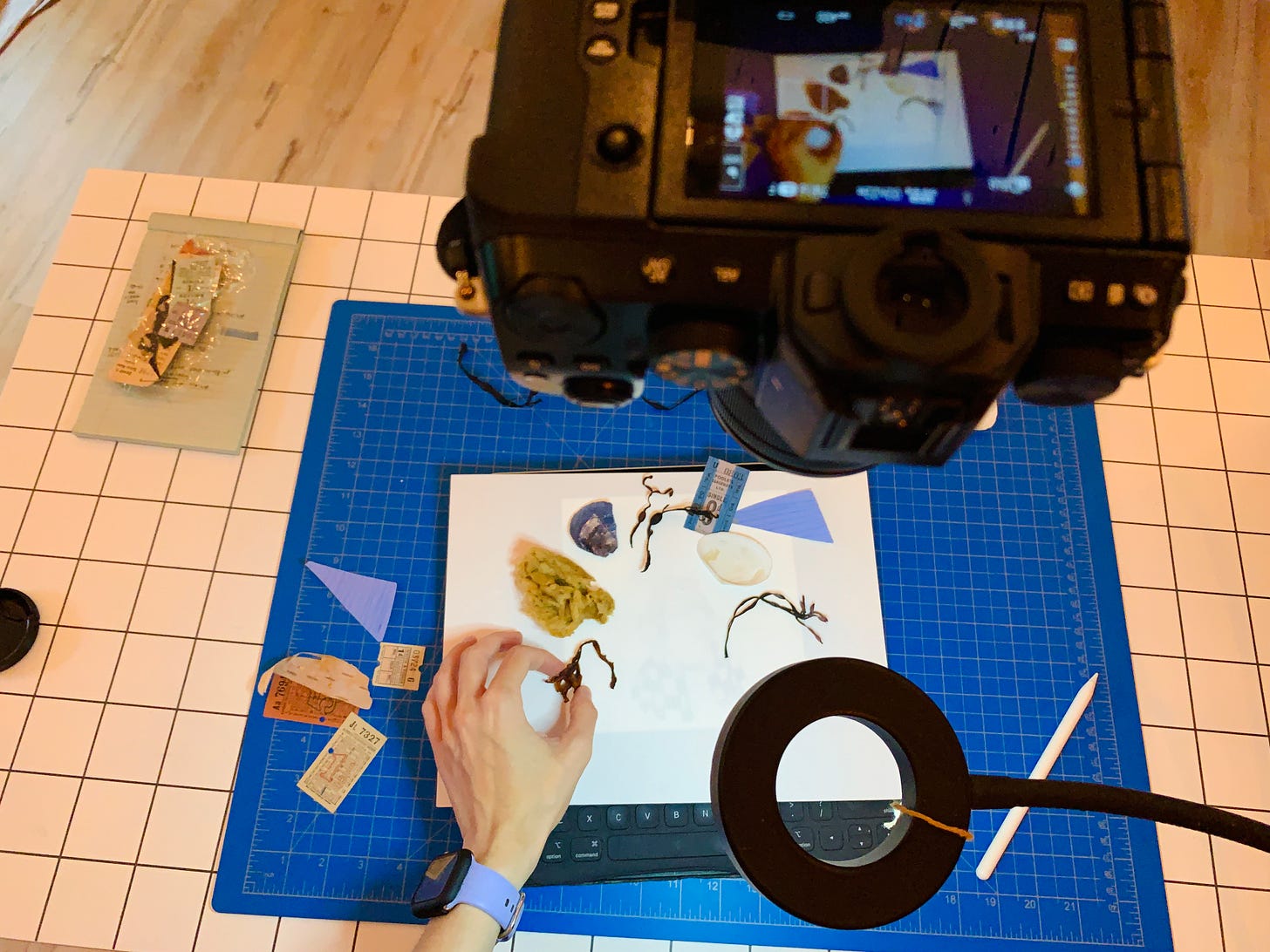How Do You Draw a Feeling?
An update on the neurodivergent picture book "How It Feels To Me" 📖
It’s been a minute since I’ve talked much about How It Feels To Me (the picture book on neurodiversity
and I crowdfunded last year), but we’ve been hard at work behind the scenes, setting the stage for bringing it to life on the page.(Not to mention giving ourselves breaks and grace when we need them—it’s important we honor our own neurodivergent needs while teaching others about neurodiversity.)
Sarah’s been editing and honing the copy (which is brilliant) and I’ve been wrapping my brain around illustrating their words, which I realized early on gets a bit sticky—but it’s exactly the kind of delicious-storytelling-challenge-kind-of-sticky I like.
The main goal of this book is to help readers understand themselves and each other better by talking about how our brains work, and how they’re all different. Our brains modulate our senses, making some sounds or sights or smells bigger or smaller. With neurodivergent brains, that modulation might work differently than for most other people, which means we experience the world differently. A neurodivergent brain might hear light bulbs when no one else can, for example, hear background noises other brains tune out, or smell oranges from yesterday’s cleaning spray. A smell might be the biggest, loudest thing in the room, and bring on a whole wave of connections and sensations.
And how do you draw the brain smelling that smell, to show how it’s different from other brains?
It became clear to me right away, reading through the manuscript, that my biggest challenge was going to be developing a visual language to express what our brains do, and the beautiful uniqueness of each one—regardless of neurotype. Being able to show this clearly with imagery is especially important since we want to make sure anyone who struggles with reading can still access the knowledge in this book, and feel less alone with however their brain works.
As I read through the manuscript, I scribbled 3x5 card after 3x5 card of thoughts and half-ideas, notes and questions.
I knew I wanted to show not just the physical brain (easy enough to draw, but doesn’t tell you much), but a visualization of what was happening inside it—and not just what is happening scientifically, but how it feels.
That’s the most important part, I think, for readers to understand—that everyone (regardless of neurotype, but especially neurodivergent people) experiences the world differently, and there’s not inherently anything bad, or worse, or less about that. It’s important that we understand and accept both ourselves and however our brains are wired, but others, and however their brains are wired, too.
So. Back to trying to visualize how things feel.
(Quick side note: capturing how things really feel is a huge, huge part of my personal mission as a storyteller, both with words and pictures. This is a big driving force behind everything I make, so it’s really exciting to be a part of a project that is literally all about this!)
One of the incredible things about neurodivergent brains is the magnificent number of connections and correlations we make, along with the way we gather and sort information. Thinking of what this connection collection might look like eventually lead me to my answer for this book’s visual language:
Using collections of physical objects in a sort of halo to represent thoughts, senses and connections, sorted by color to differentiate one person from another.
Hopefully you got this sense already, but this person is smelling the ocean. It brings up not just a mental image of the ocean (or maybe not even that at all), but all kinds of associations—maybe to a specific trip they took there, facts about animals in the sea, items they’ve collected at the beach, they way the breeze feels coming off the waves, etc.
Using this sort of “brain halo,” idea, we hope to capture these connections based on senses, and hilight differences between people’s sensory experience using objects and colors.
This also adds a fun kind of search and find element to the book, has some synesthesia vibes, and has a pretty direct connection with gestalt cognitive processing.
We hope that using this visual language will help each and every one of us literally see ourselves (and our brains) in this book, and help us embrace ourselves and our neurodivergent friends and family for who they are, and however their unique brains work.
For those of you who want more technical details of the process:
It’ll take some trial and error for me to get a full workflow in place once I start the final illustrations, but for this test illustration, I drew the person digitally in Procreate, and laid out the objects on a white piece of paper using my iPad as a kind of ad hoc lightboard. With my new top-down camera set up (funded by YOU in the crowdfunding campaign last spring!), I photographed them after locking the iPad. From there I could work digitally to adjust the colors of the objects, add the blue halo effect, and tweak the digital drawing placement if needed.
Want to be a part of it?
For this mixed media approach, I’ll need to collect a LOT of varied objects.
We won’t be able to include absolutely everything, but it’s important to us we represent you as best we can, and I’d love to do that directly with some of the objects I’ll be collecting for the illustrations.
✨Are there particular objects, materials, or collections you particularly connect with as a neurodivergent person?✨
Let me know in the comments and I’ll see what I can do to include them in the book some way or another!
Stay tuned for more updates later this year as I jump into the main illustration work!











I’m so excited to see this book come alive! 🐚🌀🌊
This is looking amazing! I think you’re capturing those feeling perfectly. The halo is a really great visual.